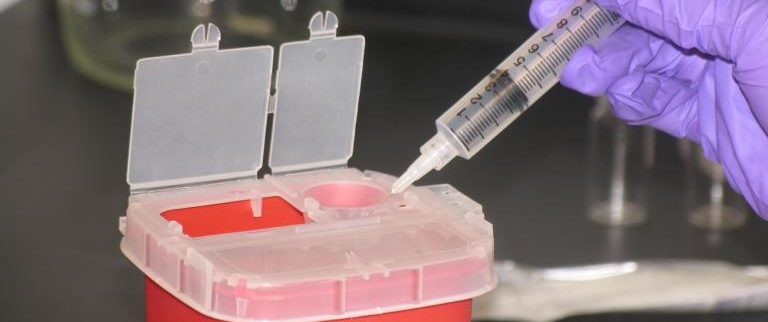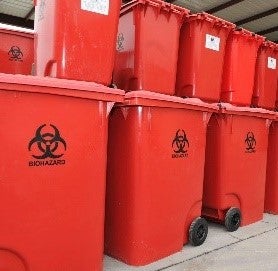Biohazardous Waste Management

Biohazardous waste, or Regulated Medical Waste (RMW) consists of all biological, pathological and infectious wastes.

Regulated Medical Waste (RMW):
Encompasses a range of waste materials generated in healthcare facilities and research laboratories. Includes waste that may pose a risk of infection or injury to workers or the public.
Examples:
Contaminated materials, Used PPE, Blood saturated items, Cultures and stocks, Sharps enclosed in a sharp container

Pathological Waste:
This specifically refers to waste materials derived from human or animal tissues, organs, and body parts. This waste is typically generated in the DCM or anatomy teaching labs.
Examples:
Surgical specimens, Excised tissue & organs
Most regulated medical waste (RMW) can be disposed of by placing the bag or sharps container into one of the biowaste toters that are located in autoclave rooms throughout the research facilities. This waste must be placed in a red or orange bag, labeled with a biohazard symbol. Furthermore, it is imperative that that the bag is secured at the top and does not have any holes or projections that will cause imminent puncture. The waste areas will be routinely checked and toters will be replaced as necessary; if all toters in your area are full, return your waste to secondary containment and contact us for assistance.
Pathological waste is typically processed by Department of Comparative Medicine (DCM) staff following disposal by the researchers within the RRF. Labs that generate this waste outside of the DCM must submit a “Pathological/Trace Chemotherapeutic Waste Pick-Up Request”. Allow 1-3 business days for pick-up.
For more information refer to our “Biowaste Flow Chart” or contact us at gu-ehs@georgetown.edu.
